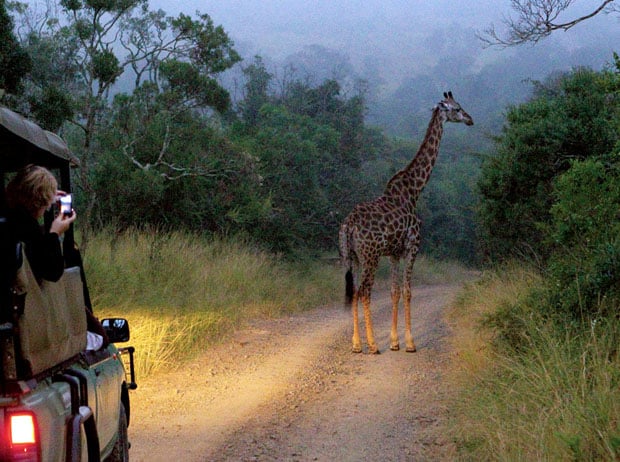Need a break from the Kruger? go! suggests the Hluhluwe-Imfolozi Park in northern KwaZulu-Natal for a totally different game-viewing experience. You might even see the elusive black rhino…
Hluhluwe and Imfolozi were proclaimed in 1895, and since 1989 they have been managed as one park. Their history goes back even further. Before 1895, this was the hunting territory of Dingiswayo and Shaka. Hunting was limited to royals and was only permitted in winter.
The two reserves are quite different. Hluhluwe has densely grown, green hills and is said to be the best place to see elephants. Imfolozi is flat and open. You’ll see plains game like impala, kudu, blue wildebeest and zebra. And predators like wild dog and lion, if you’re lucky.
Rhinos and Hluhluwe-Imfolozi are synonymous. After all, this is where the massively successful Operation Rhino kicked off in the 1960s, with the aim of saving the white rhino from extinction.
Black rhino, however, are seldom seen.
They’re shy creatures and there are lots of places to hide. You have to have an eye for detail to distinguish a black rhino from a white rhino. Don’t be fooled by the names; both species are the same shade of grey.
The most obvious difference is that a black rhino has a pointed upper lip and a white rhino has a wide, square upper lip.
The name “white” rhino is apparently a mistranslation of the Afrikaans word for wide – “wyd” – in reference to the lip.
A black rhino also has a concave back, whereas a white rhino has a flattish back. And although white rhinos are bigger, black rhinos are more aggressive.

At the reception at Hilltop Camp there’s a map of the reserve where visitors can indicate their sightings. Set out early, because it’s a bit of a drive to the Imfolozi game-viewing routes: about 50km of tar road to Mpila Camp (the main camp in Imfolozi) and then another 12km to the lookout over the Black Mfolozi.
The last remaining lion in the reserve was shot in the early 1900s. Then, in 1958, game rangers were astounded to see a huge male. He was believed to have walked south from Mozambique, dodging hunters out to bag “the last lion in Zululand”.
Safe and sound in the reserve, he spent a few lonely years checking out his new territory until a few lionesses magically appeared – apparently smuggled in by conservation-minded staff. The rest, as they say, is history.

Certain prides in Imfolozi have developed an unusual habit – the lions climb trees. Reserve ecologists aren’t entirely sure why they do this. The most plausible theory is that the extra elevation allows them to cool down more easily. They might even do it for fun. Maybe they’re hiding from the black rhinos?
Rhino poaching has escalated dramatically in the past few years and Hluhluwe-Imfolozi’s population has been targeted too. Rhinos have been killed, despite the best efforts of the reserve authorities to curb the scourge. To spend time with a rhino in the wild – white or black – is yet another reminder of how fragile our natural heritage is, and how important it is to preserve it.
Source: network24





